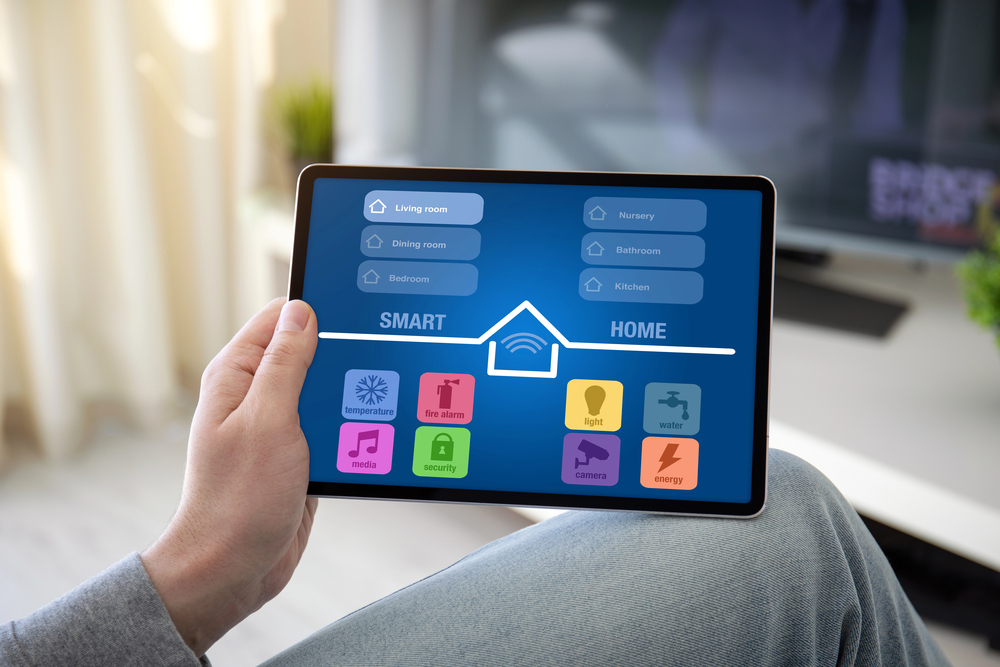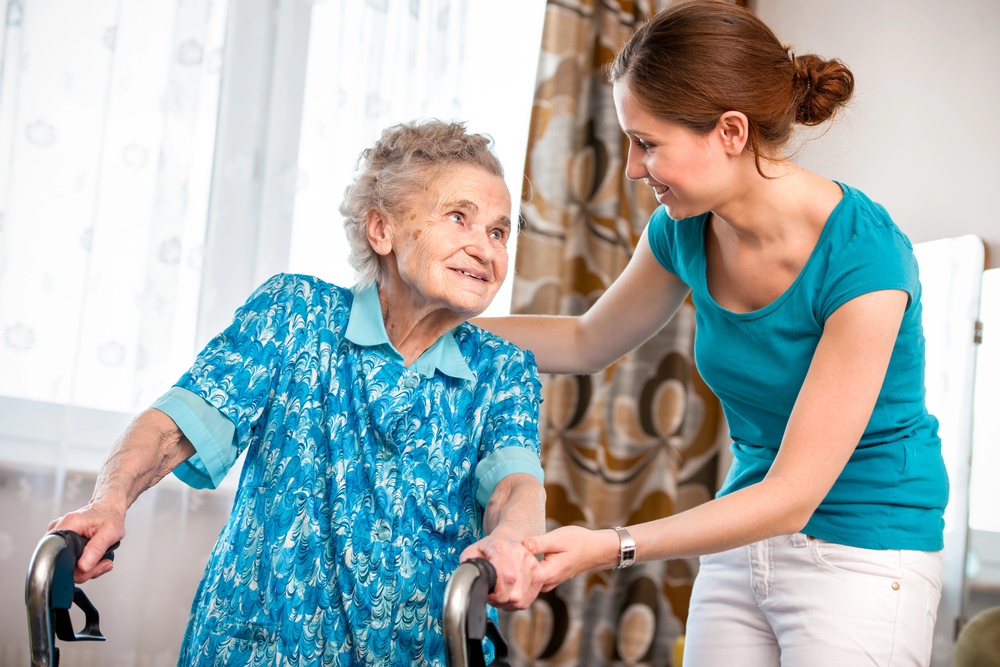Aging in Place: Your Guide to Growing Older at Home for as Long as Possible

The desire to age in place—to stay in your home and grow older comfortably in familiar surroundings—has never been stronger among American adults. According to AARP's 2024 Home and Community Preferences Survey, a remarkable 75% of adults aged 50 and older express a strong preference for staying in their homes as they age, while 77% of people age 50+ say they want to remain in their home for as long as possible.
Yet despite this overwhelming desire to age in place, many older adults face significant challenges in preparing their homes for safe and independent living. The sobering reality is that over 80% of older adults feel safer in their homes than anywhere else, yet 90% of homes don't have the proper modifications to safely age in place, according to Choice Mutual's 2024 research.
If you prefer, you can listen to a "podcast style" version of this blog post:
This comprehensive guide will walk you through everything you need to know about aging in place: from essential home modifications and safety improvements to financial planning and technology solutions that can help you stay in your home longer. Whether you're planning ahead or need immediate assistance, this resource provides actionable strategies to help older adults create a safe, accessible living environment that supports healthy aging.
What Does It Mean to Age in Place?
Age in place refers to the ability to live in your own home safely, independently, and comfortably, regardless of age, income, or ability level. This concept encompasses not just staying in your physical dwelling, but maintaining your autonomy, social connections, and quality of life as you grow older.
The National Institute on Aging defines aging in place as "staying in your own home as you get older," but the modern interpretation has evolved to include a broader ecosystem of support. Today's aging in place strategy involves creating a comprehensive plan that addresses physical modifications, care services, technology integration, and community resources.
Why Aging in Place Matters More Than Ever
Several factors are driving the increased focus on aging in place:
Demographic Reality: The U.S. will soon have more people over age 65 than under 18, creating unprecedented demand for housing solutions that support older adults.
Cost Considerations: With assisted living facilities averaging $4,500 per month and nursing home semi-private rooms costing $7,908 monthly, staying in your home can be significantly more affordable.
Personal Preference: Research consistently shows that many older adults want to stay in their own home rather than move to institutional care. AARP data reveals that older adults want to maintain their independence, preserve their social connections, and retain control over their daily routines.
Health Benefits: Studies indicate that older adults who successfully age in place often experience better mental health outcomes, maintain stronger social networks, and report higher life satisfaction compared to those who relocate to care facilities.

How Do I Prepare My Home for Aging in Place? Essential Safety Modifications
Creating a home environment that supports aging requires a systematic approach to identifying and addressing potential safety hazards. The key is to make modifications that enhance safety while preserving the home's comfort and familiar feel.
Bathroom Safety: The Top Priority for Home Modifications
The bathroom represents the highest risk area for accidents among older adults. According to AARP's 2024 survey, 72% of older adults plan to add bathroom modifications such as grab bars and no-slip tile.
Essential Bathroom Modifications:
- Grab bars: Install grab bars next to the toilet, in the shower, and near the bathtub. Professional installation ensures proper anchoring into wall studs for maximum safety.
- Walk-in showers: Replace traditional tubs with roll-in or walk-in showers to eliminate stepping over high tub walls.
- Non-slip surfaces: Add textured flooring, non-slip mats, and grab-friendly shower surfaces.
- Raised toilet seats: Higher toilet seats reduce strain on knees and hips.
- Improved lighting: Install bright, even lighting to eliminate shadows and dark corners.
Cost Considerations: Bathroom modifications range from $50 for basic grab bars to $20,000-$25,000 for complete accessible bathroom remodels, according to Carex Health Brands' 2024 research.
Mobility and Accessibility Improvements
Creating safe and accessible pathways throughout the home is crucial for maintaining independence. Research shows that 71% of older adults planning to stay in their homes will likely need to install ramps, chairlifts, or wider doorways.
Key Mobility Modifications:
- Stair safety: Install handrails on both sides of staircases, ensure adequate lighting, and consider stairlifts for multi-level homes.
- Doorway widening: Standard doorways (32 inches) should be widened to 36 inches minimum for wheelchair accessibility, costing $300-$2,500 per doorway.
- Ramp installation: Professional ramp installation averages $1,500-$3,000, providing essential access for wheelchairs and mobility devices.
- Eliminate loose stair railings: Secure any loose stair railings immediately to prevent falls.
Kitchen Adaptations for Aging at Home
The kitchen requires specific modifications to support daily living activities while maintaining cooking independence:
Smart Kitchen Updates:
- Lever-style handles: Replace round doorknobs and faucet handles with lever-style alternatives that are easier to operate with limited grip strength.
- Pull-out shelving: Install sliding shelves in lower cabinets to improve accessibility.
- Accessible counter heights: Consider adjustable-height countertops or ensure at least one workspace is wheelchair accessible.
- Improved lighting: Add under-cabinet lighting and brighter overhead fixtures.
Home Safety Assessment: Creating a Safe and Accessible Living Environment
A comprehensive home safety assessment is the foundation of successful aging in place planning. The CDC's home fall prevention checklist provides an excellent starting point for identifying potential hazards.
Room-by-Room Safety Evaluation
Living Areas:
- Remove loose rugs or secure them with non-slip backing
- Ensure clear pathways free of clutter
- Improve lighting, especially near seating areas
- Position furniture to create stable support when walking
Bedrooms:
- Install adequate lighting between bed and bathroom
- Ensure bed height allows feet to touch floor when seated
- Clear pathways to emergency exits
- Consider placing bedroom, bathroom, kitchen, and laundry on the main floor
Stairways:
- Verify handrails are secure and extend beyond the top and bottom steps
- Ensure adequate lighting with switches at both ends
- Remove any papers, shoes, books, or other objects from stairs
- Consider contrasting tape on step edges for visibility
Emergency Preparedness for Aging in Place
Medical Alert Systems: Consider emergency medical alert systems that respond to falls, medical emergencies, or when someone becomes lost. Modern systems often include GPS tracking and two-way communication.
Safety Check Protocols: Establish regular contact with friends and neighbors for daily safety checks. Many communities offer volunteer programs specifically designed to support older adults aging in place.
Emergency Planning: Develop and practice emergency evacuation plans, ensure important documents are easily accessible, and maintain emergency supply kits.
Technology Solutions for Aging in Place: Smart Home Innovation
Technology is revolutionizing how older adults can age gracefully in their homes. AARP's research on aging and technology reveals that older adults are increasingly comfortable with using technology in their daily lives and find it useful for aging in place.

Smart Home Devices for Senior Safety
Voice-Activated Assistants: Amazon's Alexa Together and similar services provide medication reminders, emergency calling, and home automation control through simple voice commands.
Home Security and Monitoring: Modern smart home systems include:
- Video doorbells with two-way communication
- Motion sensors that can detect falls or unusual activity patterns
- Smart locks for keyless entry
- Environmental monitoring for temperature, air quality, and water leaks
Health Monitoring Technology: Wearable devices and home sensors can track vital signs, monitor medication adherence, and detect changes in daily routines that might indicate health concerns.
Medical Emergency Response Systems
According to AARP's 2024 survey, medical emergency response systems top the list of technology that older adults expect to install in their homes. These systems have evolved beyond traditional "I've fallen and can't get up" pendants to include:
- GPS-enabled mobile devices for protection outside the home
- Automatic fall detection sensors
- Medication management systems with alerts
- Integration with caregiver networks and healthcare providers
Financial Planning: Understanding the Cost of Aging in Place
One of the most important aspects of aging in place planning involves understanding and preparing for the associated costs. While staying in your home can be more affordable than assisted living or skilled nursing care, proper planning requires realistic budgeting for modifications, care services, and ongoing maintenance.
Home Modification Costs: What to Expect
According to 2024 industry research, the national average for aging in place renovations ranges from $3,000 to $15,000, with most people paying around $9,500 for comprehensive modifications.
Detailed Cost Breakdown:
- Basic safety modifications: $50-$500 (grab bars, improved lighting, non-slip surfaces)
- Bathroom accessibility upgrades: $5,000-$25,000 (walk-in showers, accessible fixtures)
- Kitchen modifications: $2,000-$10,000 (accessible counters, cabinet modifications)
- Mobility improvements: $1,000-$15,000 (ramps, stairlifts, doorway widening)
- Technology integration: $500-$5,000 (smart home devices, medical alert systems)
Ongoing Care Costs vs. Alternative Living Arrangements
Understanding the long-term financial implications helps in making informed decisions about aging in place versus other housing options:
Home Care Services: According to the 2023 Genworth Cost of Care Survey, in-home companions cost around $30 per hour, while home health aides cost about $33 per hour. Even with just four hours of care per day, five days a week, costs reach approximately $2,640 per month.
Comparison to Alternatives:
- Independent senior living: $4,126 per month average
- Assisted living: $4,500 per month average
- Nursing home (semi-private): $7,908 per month average
- Memory care: Often exceeding $6,000 per month
Funding Resources and Financial Assistance
Multiple funding sources can help offset the costs of aging in place:
Government Programs:
- Medicare may cover certain medical equipment and home health services
- Medicaid programs in some states cover home modifications
- VA benefits for eligible veterans
- Local Area Agencies on Aging often provide grants or low-cost loan programs
Private Financing Options:
- Long-term care insurance policies that include home modification benefits
- Reverse mortgages for homeowners age 62+
- Home equity loans or lines of credit for major renovations
- Specialized aging-in-place renovation loans
Care Services and Support Systems: Building Your Care Plan
Successful aging in place typically involves a combination of informal care from family and friends, formal care services, and community resources. The key is developing a comprehensive care plan that can adapt as needs change over time.
Types of In-Home Care Services
Personal Care Services: Help with activities of daily living including bathing, dressing, grooming, medication management, and mobility assistance. These services are essential for older adults who need help with personal care but want to stay in their own home.

Home Care Services: Include light housekeeping, meal preparation, transportation to appointments, errands, and companionship. These services help older adults maintain their independence while receiving necessary support.
Healthcare Services: Range from skilled nursing care for wound care and medication management to physical therapy, occupational therapy, and speech therapy provided in the home environment.
Building a Support Network
Family and Friends: Research shows that informal caregivers provide the majority of support for older adults aging in place. Nearly half of all adults are currently caregivers (13%) or expect to be (34%) at some point in their lives, with one in three likely to provide care in the person's home.
Professional Care Providers: Geriatric care managers can help coordinate services and develop comprehensive care plans. These specially trained professionals understand the complex needs of older adults and can help navigate available resources.
Community Resources: Local Area Agencies on Aging provide information about community services, while many religious organizations, volunteer groups, and neighborhood networks offer informal support systems.
Caregiver Support and Resources
For families providing care, it's important to access resources that support both the older adult and their caregivers:
- Respite services: Provide temporary relief for regular caregivers
- Adult day care programs: Offer social activities, meals, and personal care during the day
- Support groups: Connect caregivers with others facing similar challenges
- Educational resources: Help caregivers develop skills and understand available options
Smart Home Technology: Enhancing Independence Through Innovation
The integration of smart home technology is transforming how older adults can maintain independence while aging in place. Recent research indicates that smart home technology has significant potential to allow older adults to remain in their homes and live independently for longer periods.
Essential Smart Home Features for Aging in Place
Environmental Controls: Smart thermostats, lighting systems, and automated window coverings can be controlled remotely or programmed to maintain optimal comfort without physical strain. Voice-activated controls eliminate the need to reach switches or dials.
Safety and Security Systems: Modern systems include door and window sensors, motion detectors, and cameras that can alert family members or caregivers to unusual activity. Smart smoke detectors and carbon monoxide monitors provide enhanced protection.
Health Monitoring Integration: Emerging technology allows homes to monitor residents' health and daily routines unobtrusively. Sensors can track movement patterns, sleep quality, and changes in routine that might indicate health concerns.
Practical Implementation of Smart Technology
Start Simple: Begin with basic devices like voice assistants, smart lighting, and simple security systems. Gradually add more sophisticated technology as comfort levels increase.
Professional Installation: While many smart devices are designed for easy installation, professional setup ensures optimal performance and integration with existing home systems.
Training and Support: Many technology companies now offer specialized training programs for older adults, recognizing that proper education is crucial for successful adoption.
Advanced Planning Strategies: Preparing for Changing Needs
Successful aging in place requires anticipating how needs may change over time and planning accordingly. This proactive approach ensures that modifications and support systems can evolve with changing circumstances.
Anticipating Future Mobility Needs
Progressive Accessibility Planning: When making initial home modifications, consider future needs. For example, installing blocking in bathroom walls during renovation makes future grab bar installation easier and less expensive.
Multi-Level Home Strategies: For homes with multiple floors, plan for potential mobility limitations by ensuring essential living spaces (bedroom, bathroom, kitchen) can be accessed on one level. This might involve converting a first-floor room to a bedroom or adding a half-bath on the main level.
Transportation Planning: As driving abilities may change, proximity to public transportation, ride-sharing services, or volunteer driver programs becomes increasingly important for maintaining independence.
Health Care Coordination
Establishing Relationships: Build relationships with healthcare providers who support aging in place, including geriatricians, home health agencies, and specialized therapists who make house calls.
Care Plan Development: Work with healthcare providers to develop comprehensive care plans that address current needs and anticipate future requirements. This includes medication management, chronic disease management, and emergency protocols.
Technology Integration: Modern telehealth services can provide remote monitoring and consultation, reducing the need for transportation to medical appointments while maintaining quality care.
Legal and Financial Preparation
Advanced Directives: Ensure all legal documents are current, including wills, powers of attorney, and healthcare directives. These documents should reflect the desire to age in place when possible.
Long-term Care Insurance: Investigate policies that specifically cover aging in place services, including home modifications and in-home care services.
Property Planning: Consider how home ownership will be managed if cognitive abilities decline, including the possibility of adding family members to property deeds or establishing trusts.
Common Mistakes to Avoid When Aging in Place
Many families make preventable mistakes when planning for aging in place. Understanding these common pitfalls can help you avoid costly errors and ensure better outcomes.
Waiting Too Long to Make Modifications
The Problem: Many people wait until after a fall or health crisis to make home modifications, limiting their options and increasing costs.
Better Approach: Begin planning and implementing basic modifications while still healthy and mobile. This allows for better decision-making and more cost-effective solutions.

Focusing Only on Physical Modifications
The Problem: Concentrating solely on home modifications while ignoring social connections, healthcare coordination, and emergency planning creates an incomplete aging in place strategy.
Better Approach: Develop a comprehensive plan that addresses physical, social, medical, and emergency needs. Consider how each component works together to support independence.
Inadequate Financial Planning
The Problem: Underestimating the long-term costs of aging in place, including ongoing care services, home maintenance, and emergency expenses.
Better Approach: Develop realistic budgets that account for escalating care needs over time. Investigate multiple funding sources and consider long-term care insurance early.
Attempting to Handle Everything Independently
The Problem: Trying to manage all aspects of aging in place without professional guidance or family support often leads to poor outcomes and increased stress.
Better Approach: Build a team of professionals including geriatric care managers, healthcare providers, and trusted contractors. Accept help from family and friends while maintaining appropriate independence.
Ignoring Safety Warning Signs
The Problem: Dismissing near-falls, minor accidents, or increasing difficulty with daily tasks as normal aging rather than addressing underlying safety concerns.
Better Approach: Conduct regular safety assessments and address concerns promptly. View changes in function as opportunities to implement helpful modifications rather than signs of failure.
Resources and Professional Support for Aging in Place
Successfully aging in place often requires accessing various professional services and community resources. Understanding what's available and how to access these resources is crucial for developing an effective aging in place plan.
Professional Services
Geriatric Care Managers: These specialized professionals assess needs, develop care plans, and coordinate services. The Aging Life Care Association provides directories of certified professionals.
Occupational Therapists: Specialists in home safety assessments and adaptive equipment recommendations. Many insurance plans cover occupational therapy evaluations for home safety.
Certified Aging-in-Place Specialists (CAPS): Construction professionals specifically trained in home modifications for older adults. The National Association of Home Builders maintains a directory of CAPS-certified contractors.
Government Resources
Eldercare Locator: The U.S. Administration on Aging's Eldercare Locator (800-677-1116) connects older Americans with local support resources including transportation, home modifications, and care services.
Area Agencies on Aging: Local agencies provide information about community services, funding assistance, and volunteer programs. Many offer free home safety assessments and low-cost modification programs.
State Housing Finance Agencies: Many states offer loan programs and grants specifically for aging in place home modifications. Contact your state housing finance agency for available programs.
Technology and Equipment Resources
Assistive Technology Programs: Every state has an Assistive Technology Program that provides information, equipment loans, and funding assistance for adaptive devices and home modifications.
Medicare Equipment Benefits: Medicare may cover certain medical equipment including hospital beds, wheelchairs, and bathroom safety equipment when prescribed by healthcare providers.
Technology Training Programs: Many community colleges, libraries, and senior centers offer technology training specifically designed for older adults, covering everything from basic smartphone use to smart home device management.
Creating Your Personal Aging in Place Action Plan
Developing a successful aging in place strategy requires creating a personalized action plan that addresses your specific needs, preferences, and circumstances. This step-by-step approach helps ensure you address all critical components.
Phase 1: Assessment and Planning (Months 1-3)
Home Safety Evaluation: Conduct a comprehensive room-by-room safety assessment using resources like the CDC's home safety checklist.
Financial Planning: Calculate current assets, estimate future costs, and investigate funding sources. Meet with financial advisors who specialize in aging and long-term care planning.
Healthcare Team Assembly: Establish relationships with geriatricians, specialists, and home health agencies. Ensure all providers support your aging in place goals.
Phase 2: Immediate Safety Improvements (Months 3-6)
Priority Modifications: Address immediate safety concerns such as poor lighting, loose stair railings, and bathroom hazards. These modifications typically cost $3,000-$5,000 and provide immediate safety benefits.
Technology Integration: Begin with simple smart home devices like voice assistants, smart lighting, and basic security systems. Gradually expand as comfort with technology increases.
Emergency Preparedness: Establish emergency contact systems, medical alert services, and ensure all important documents are accessible.
Phase 3: Long-term Planning and Implementation (Months 6-12)
Major Modifications: Plan and implement larger projects such as bathroom renovations, kitchen modifications, or accessibility improvements. Budget $10,000-$25,000 for comprehensive modifications.
Care Service Planning: Research and establish relationships with care providers before services are needed. Many agencies have waiting lists, so early planning is essential.
Community Integration: Connect with community resources, volunteer programs, and social activities that support aging in place goals.
Phase 4: Ongoing Management and Adaptation
Regular Reassessment: Conduct annual reviews of home safety, care needs, and plan effectiveness. Adjust strategies as needs change.
System Maintenance: Ensure technology, safety equipment, and home modifications remain functional and current.
Social Connection Maintenance: Actively maintain social connections and community involvement, as isolation is a significant risk factor for aging in place failure.
Conclusion: Embracing Your Future at Home
Aging in place represents more than just staying in your house—it's about creating a comprehensive support system that enables you to live independently, safely, and comfortably as you grow older. The statistics are clear: the vast majority of older adults want to age in place, and with proper planning, home modifications, and support services, this goal is achievable for most people.
The key to successful aging in place lies in proactive planning that addresses not just physical modifications, but also healthcare coordination, financial planning, emergency preparedness, and social connections. By taking action while you're still healthy and independent, you can create an environment that adapts to changing needs and supports your desire to remain at home for as long as possible.
Remember that aging in place is not an all-or-nothing proposition. The goal is to maintain independence and quality of life for as long as safely possible. This may involve gradually increasing support services over time, from occasional help with errands to more comprehensive personal care assistance.
The resources available to support aging in place continue to expand, from government programs and community services to innovative technologies and specialized professionals. By staying informed about available options and building a strong support network, you can confidently pursue your goal of growing older at home.
Whether you're planning for your own future or helping older adults in your life, the investment in aging in place preparation pays dividends in improved safety, maintained independence, and enhanced quality of life. Start your planning today—your future self will thank you for the foresight and preparation that makes aging in place a successful reality rather than just a hopeful wish.
Frequently Asked Questions About Aging in Place
Q: How do I know if my home is suitable for aging in place?
A: Most homes can be modified to support aging in place with proper planning and investment. Key factors include the ability to create at least one accessible bathroom, access to the main living areas without stairs, and adequate space for mobility devices if needed. A professional assessment by an occupational therapist or certified aging-in-place specialist can help determine what modifications are needed.
Q: What are the most important first steps for preparing to age in place?
A: Start with a comprehensive home safety assessment, address immediate hazards like poor lighting and loose stair railings, and begin financial planning for future modifications and care needs. Installing basic safety features like grab bars and improving lighting are often the most cost-effective initial improvements.
Q: How much should I budget for aging in place modifications?
A: Basic safety modifications can cost as little as $3,000-$5,000, while comprehensive accessibility renovations may reach $15,000-$25,000. Bathroom modifications typically represent the largest expense, ranging from $5,000 for basic improvements to $25,000 for full accessibility renovations.
Q: Can I get financial assistance for home modifications?
A: Yes, multiple funding sources exist including VA benefits for eligible veterans, state and local grant programs, some Medicaid waiver programs, and specialized loan programs. Contact your local Area Agency on Aging for information about programs in your area.
Q: What technology can help me age in place safely?
A: Essential technology includes medical alert systems, smart home devices for lighting and security, video doorbells for safe visitor interaction, and medication management systems. Start with simple devices and gradually expand based on comfort level and needs.
Q: How do I find reliable contractors for aging in place modifications?
A: Look for contractors certified as Certified Aging-in-Place Specialists (CAPS) through the National Association of Home Builders. Get multiple quotes, verify licenses and insurance, and ask for references from other older adult clients.
Q: When should I consider moving instead of aging in place?
A: Consider alternative housing when home modifications become prohibitively expensive, care needs exceed what can be safely provided at home, or when social isolation becomes a significant problem. The decision should be based on safety, affordability, and quality of life considerations.
Q: How can I maintain social connections while aging in place?
A: Stay connected through community organizations, religious institutions, volunteer programs, and technology like video calling. Many communities offer senior transportation services and social programs specifically designed to combat isolation among older adults aging in place.
For more information about aging in place resources in your area, contact the Eldercare Locator at 800-677-1116 or visit eldercare.acl.gov. This article is for informational purposes only and does not constitute medical or financial advice.



